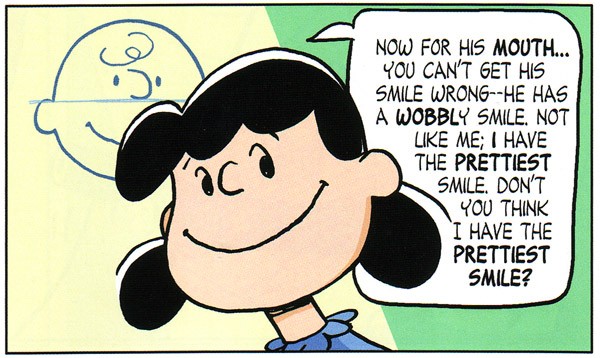Imagine that you’re a young saxophonist asked to compose and record a new album marketed as “John Coltrane” 50 years after the jazz icon’s death.
Big responsibility, right?
For a Santa Rosa–based group of cartoonists, drawing new Peanuts material 12 years after the death of its famed creator Charles Schulz carries a comparable cultural weight.
“It’s a little intimidating,” says Alexis Fajardo, managing editor for the new Peanuts comic book series, which features new stories, new drawings and new situations for familiar characters like Charlie Brown, Linus, Snoopy and Lucy, all inextricably linked with Schulz and his daily comic strip.
“For me, as a fan, that was the biggest hurdle,” admits Fajardo, a successful comic book artist in his own right with the Kid Beowulf series. “The comic strip medium was sacrosanct. That’s Schulz’s domain. We could never replicate that, but we always wanted to get Peanuts in front of kids again, and we’ve been trying to figure out how to do that.”
Diehards might remember the request by Schulz that no new newspaper strips be drawn after his death, but the comic book format remains authorized—and, as Fajardo notes, reaches a new, young audience.
“Kids don’t read the newspaper anymore,” says Fajardo. “They don’t have access to Peanuts the way that we did.”
The burden of carrying on a gigantic legacy such as Schulz’s would be daunting to most, but it’s hard to imagine a more appropriate group of cartoonists creating the Peanuts comic books, which are published and distributed by Kaboom! Studios. Along with creative director Paige Braddock, a longtime Schulz associate and creator of the award-winning comic strip Jane’s World, Fajardo helped recruit Bob Scott and wife Vicki, both Peanuts devotees, to create new drawings and stories. Also on board is Matt Whitlock, an animator for Family Guy and a dedicated Peanuts fan who owns an original print given to him personally by Schulz.
In a nod to Schulz’s artistic legacy, Braddock even inks the colors in some of the comics using pen nibs given to her by Schulz.
“We’re lucky to have found Vicky, Bob, Paige and Matt to do really spot-on illustrations,” says Fajardo. “Even more important was finding writers who could convey and understand the tone of the characters. That’s the magic Schulz had. He had this great cast, and he knew where to place them.”
The key to the project’s success came from staying true to the authenticity of the characters, a task that’s easy, says Vicki Scott, given their “shockingly” three-dimensional nature. Staying well within the boundaries of the Peanuts universe was also important; readers won’t see Linus shooting off into outer space or piloting a submarine. “It’s such a lovely property, you don’t want to steer it off track too far,” explains Scott.
“We don’t want to turn it into The Smurfs,” adds Fajardo, referring to the CGI-laden, live-action film released last summer. “The Smurfs is one of those classic European comics with beautiful line work. And it gets this 21st-century update where it’s just kind of ugly.”
Peanuts comic books have been released before, by Dell Comics in the early 1960s, but without much success. “The personality, the DNA hadn’t been established,” says Fajardo. “We’re lucky now that we have 50 years of strips to play around with.” The first issue in the series contains a replica of one of those old Dell covers. In addition, original Peanuts strips bracket the new material.
The response from fans has been good so far, says Braddock. Though no diehards have picked up the proverbial pitchfork and stormed the studio, there has been minor grumbling on message boards—an expectation, given the task of replicating something held so dear by so many. But for the most part, “the response has been good,” says Braddock.
The big question is: What would Sparky think?
Braddock says that when Schulz first hired her in the late 1990s, he talked of revitalizing the Peanuts children’s books. She believes he would see a venture into comic books as part of that dream.
“I never got to talk with him about the original comic [book] series, but I’m sure he liked them,” says Braddock. “He did covers for them. I think more than anything, he would love all the new artists working here in the studio. I think he would really get a kick out of that.”











